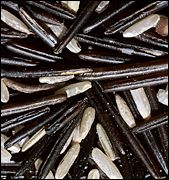Whether you accept it, avoid it or live somewhere in between, insurance coverage has become a defining issue for our profession. Patients increasingly expect to use their benefits, practitioners want to be compensated fairly for their time and expertise, and the system itself remains – at best – fragmented. The encouraging news is that coverage has expanded in meaningful ways. The challenging news is that reimbursement, across the board, remains inadequate.
Herbs & Botanicals
Oryza (gu ya)
What is oryza? What is it used for?
Sometimes known as germinated millet, oryza is a type of rice seed found worldwide. The botanical name for oryza is oryza sativa, a plant of the grass family, which provides the bulk of the human diet in many parts of the world, particularly Asia.
Oryza contains many important components, including proteins, enzymes, starches and a fatty oil. The seeds are dried in the sun before being used in herbal remedies.
 Oryza is associated with the Spleen and Stomach meridians in traditional
Chinese medicine, and is believed to have sweet and neutral properties.
Oryza is associated with the Spleen and Stomach meridians in traditional
Chinese medicine, and is believed to have sweet and neutral properties.
How much oryza should I take?
The typical recommended dose of oryza is between 10-15 grams, usually decocted with water.
What forms of oryza are available?
Oryza is most commonly available as a powder. The powder is often encapsulated or used with water in a decoction.
What can happen if I take too much oryza? Are there any interactions I should be aware of? What precautions should I take?
Some evidences suggests that oryza may reduce the production of breast milk. As a result, it should not be taken by women who are breastfeeding.
As of this writing, there are no known drug interactions associated with oryza. As always, however, make sure to consult with a licensed health care provider before taking oryza or any other herbal remedy or dietary supplement.References
- Goff, S, Ricke, D, Lan TH, et al. A draft sequence of the rice genome (oryza sativa L. spp. Japonica). Science 2002;296:92-100.
- Gruenwald J, Brendler T, Jaenicke C (eds.) PDR for Herbal Medicines. Montvale, NJ: Medical Economics Company, 2000, p. 643.
- Swaminathan S. Rice. This member of the grass family is one of three on which the human species largely subsists. Scientific American 1984;260(1):80.
- Vignols F, Wigger M, Garcia-Garrido JM, et al. Rice lipid transfer protein (LTP) genes belong to a complex multigene family and are differentially regulated. Gene Aug. 22, 1997;195:177-86.
- Yu J, Hu S, Wang J, et al. A draft sequence of the rice genome (oryza sativa L. ssp. Indica). Science 2002;296:79-92.


